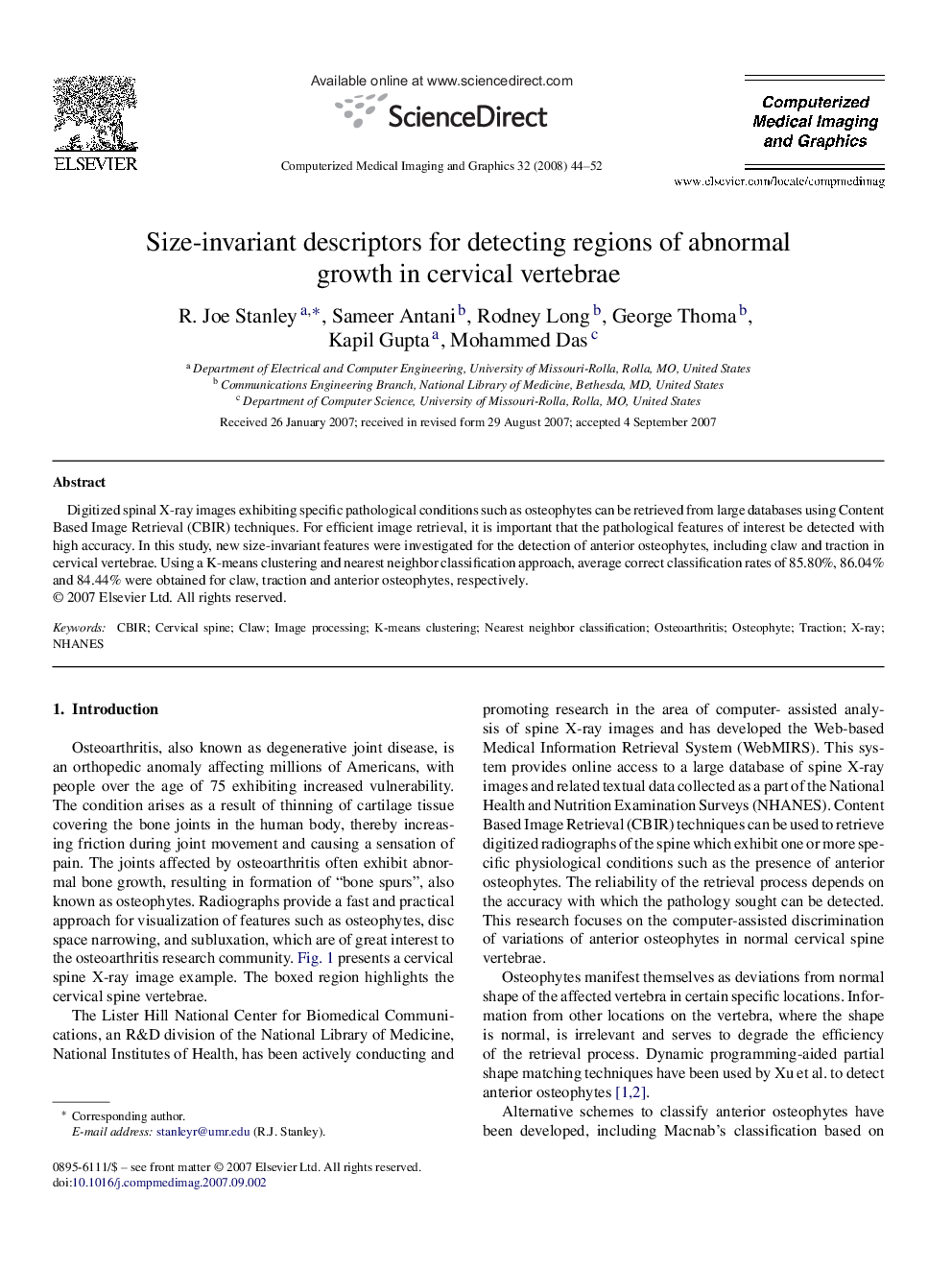| Article ID | Journal | Published Year | Pages | File Type |
|---|---|---|---|---|
| 504501 | Computerized Medical Imaging and Graphics | 2008 | 9 Pages |
Abstract
Digitized spinal X-ray images exhibiting specific pathological conditions such as osteophytes can be retrieved from large databases using Content Based Image Retrieval (CBIR) techniques. For efficient image retrieval, it is important that the pathological features of interest be detected with high accuracy. In this study, new size-invariant features were investigated for the detection of anterior osteophytes, including claw and traction in cervical vertebrae. Using a K-means clustering and nearest neighbor classification approach, average correct classification rates of 85.80%, 86.04% and 84.44% were obtained for claw, traction and anterior osteophytes, respectively.
Keywords
Related Topics
Physical Sciences and Engineering
Computer Science
Computer Science Applications
Authors
R. Joe Stanley, Sameer Antani, Rodney Long, George Thoma, Kapil Gupta, Mohammed Das,
